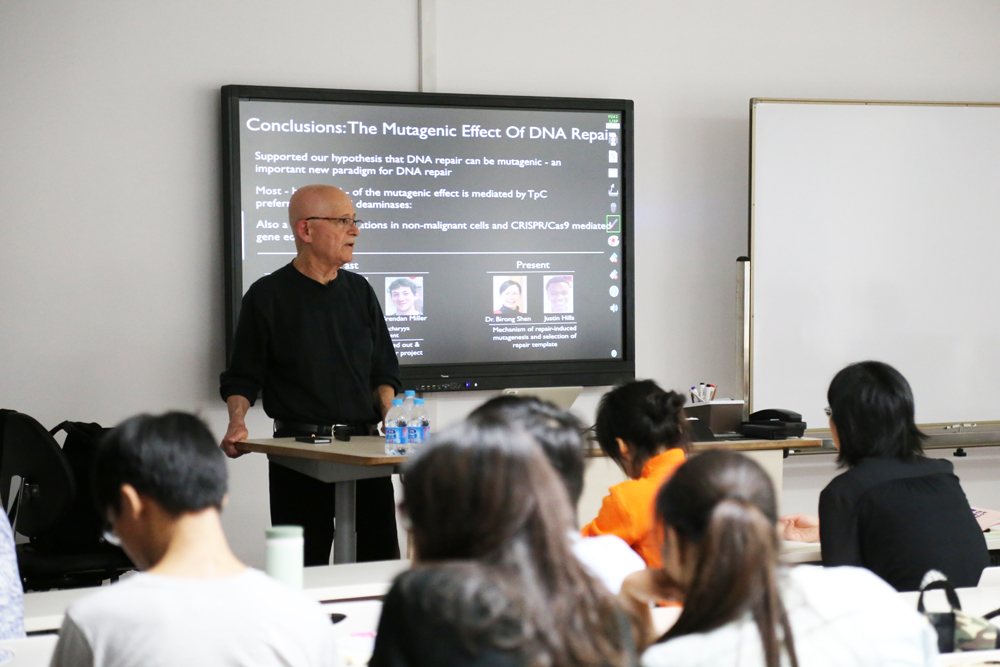In the afternoon of October 23, 2015,Dr. AnthonyV. Furano, deputy chief of National Institute of Health’s Laboratory of Cell and Molecular Biology, gave a lecture on “L1 Retrotransposons: Shapers and Historians of Mammalian Genomes” as part of ShanghaiTech’s Life Science Seminar Series.
L1 Retrotransposons are autonomous genetic elements that have been replicating and evolving in mammalian genomes for more than 80 million years. L1 replicates by copying its RNA transcript — and that of other genes — into genomic DNA. By now, L1-generated insertions account for approximately 50 percent of mammalian DNA. These insertions represent an unparalleled source of DNA fossils that provide a genetic record of its host.
L1 encodes two proteins, ORF1p and ORF2p, which are essential for its replication. ORF2p is the replicase, but the role of ORF1p, which is an unusual trimeric nucleic acid chaperone, is particularly enigmatic. How ORF1p functions in retrotransposition is unknown and, unusually for a chaperone, its active form is a trimermediated by a region that can form a triple stranded coiled coil. Dr. Furano’s lab found important roles of phosphorylation and the coiled coil domain for ORF1p activity. At the same time, his lab also found there’s a positive correlation between CpG content and genetic diversity and experimentally verified their hypothesis that “DNA repair may be mutagenic to normal flanking DNA.”



